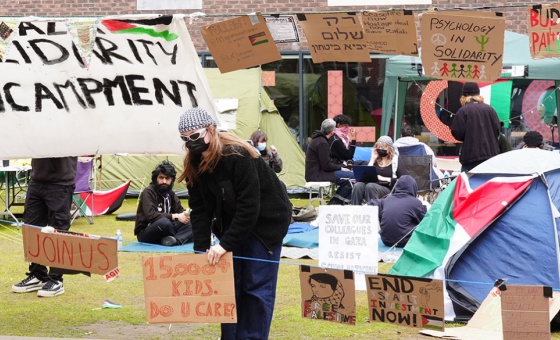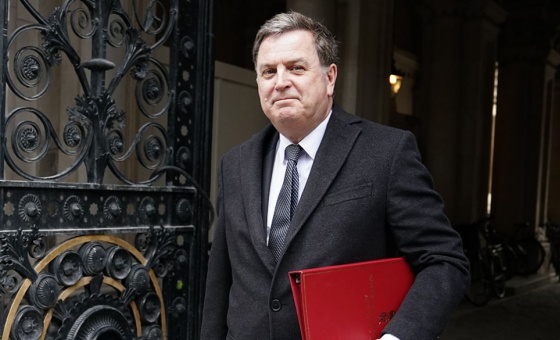This is the last article you can read this month
You can read more article this month
You can read more articles this month
Sorry your limit is up for this month
Reset on:
Please help support the Morning Star by subscribing here
IN AN attempt to counter the horrendous loss of wildlife as a result of population increase, urban spread and particularly the extensive use of intensive farming, there have been increasing calls for “rewilding.”
What does that term mean? Well, it involves an attempt to reintroduce animals and plants that used to be widespread but are today either extinct or facing extinction.
Can we, though, really bring back some of the diversity and variety of wildlife that our parents and grandparents knew or is it simply a utopian dream?
Well, there have already been notable examples of successful rewilding, notably at Knepp Farm in Sussex, the Bamff Estate in Scotland and the Allestree Park project, as well as a whole number of others.
Allestree Park is an exciting urban rewilding project in Derbyshire. The project aims to engage with the local community to co-design and deliver a community rewilding project to create the largest such site in England.
Allestree Park is the largest open space in Derby, a city of 250,000 people. The site is a former municipal golf course and also includes a local nature reserve and mixed woodland.
Derby City Council is working with Derbyshire Wildlife Trust, the University of Derby and Friends of Allestree Park to develop this community rewilding project.
The Knepp project, on the other hand, is very much the brainchild of farming couple Charlie Burrell and Isabella Tree and undertaken as a wholly private mission.
The couple has already successfully reintroduced bison and storks to the farm and their restoration of habitat has encouraged the return of nightingales and turtle doves, as well as rare insects and plants.
Particularly during the recent Covid pandemic, thousands of us have discovered, in times of stress, how important access to the countryside is.
Pre-pandemic, many of us hardly ventured into the countryside. We discovered how relaxing, therapeutic and invigorating such experiences can be.
Particularly, for those of us who live in towns, access to the countryside is not always easy or readily available. That’s why attempts to create urban wildlife sanctuaries even within or near towns are so important.
Where I live in west London, we have two campaigns ongoing that exemplify a new awareness of how valuable nature is for our wellbeing and how important it is to galvanise local action.
Ealing Wildlife Group, set up by a young vet and lover of the countryside, Sean McCormack, has mushroomed under his guidance to become a vibrant local campaigning group.
It has catalysed local action, bringing many residents together for the first time, not only to protect what green spaces we already have, but also to renovate “waste land” and create new sites.
The group has recently received the go-ahead from English Nature to introduce beavers into the borough. Beavers in London, “you must be joking,” some of you may exclaim. And, yes, it certainly won’t be unproblematic.
Although beavers would certainly be an attractive addition to our local fauna, the animals can wreak considerable damage to trees and I’m unsure if our not exactly unpolluted local river will be clean or big enough to accommodate them. But we’ll see.
The group has already successfully reintroduced harvest mice and installed owl boxes that have become homes for our three resident owl species.
Within the borough we also have an unexpected small area of fields, hedgerows and woodland, known as Warren Farm, part of which used to be a sports ground, which lapsed into disuse.
Since then the area has developed into a rich wildlife habitat with probably the only breeding population of skylarks in London, as well as three types of owl, kestrels, woodpeckers, rabbits and field voles, among others.
Many residents want to keep this valuable “green lung” as it is, but are at present fighting the local council which wants to return a section of it to sports facilities which would probably lead to the demise of most of these species.
Particularly since the widespread sell-off of schools’ sports grounds and other facilities as a result of successive governments’ austerity policies and the tightened budgets of local authorities, there is, of course, a desperate need for sports facilities too, and the council faces a difficult choice.
But the argument to keep this vital space as a wildlife habitat is strong, because once it is gone, it is unlikely to return or be replaced.
Only the other week, there was a lively demonstration outside the town hall calling on councillors to save it, but up to now those appeals have fallen on deaf ears, although the struggle is far from over.
We can all become involved in our local communities, demanding that our green spaces are protected, cared for and expanded.
If we wish to leave our children and grandchildren a world worth living in, one where they can hear the voice of a real skylark, not simply an evocation of it in Vaughan Williams’s Lark Ascending and see rich wildflower hedgerows buzzing with butterflies and bees, not simply hear about them in poetry lessons at school.












